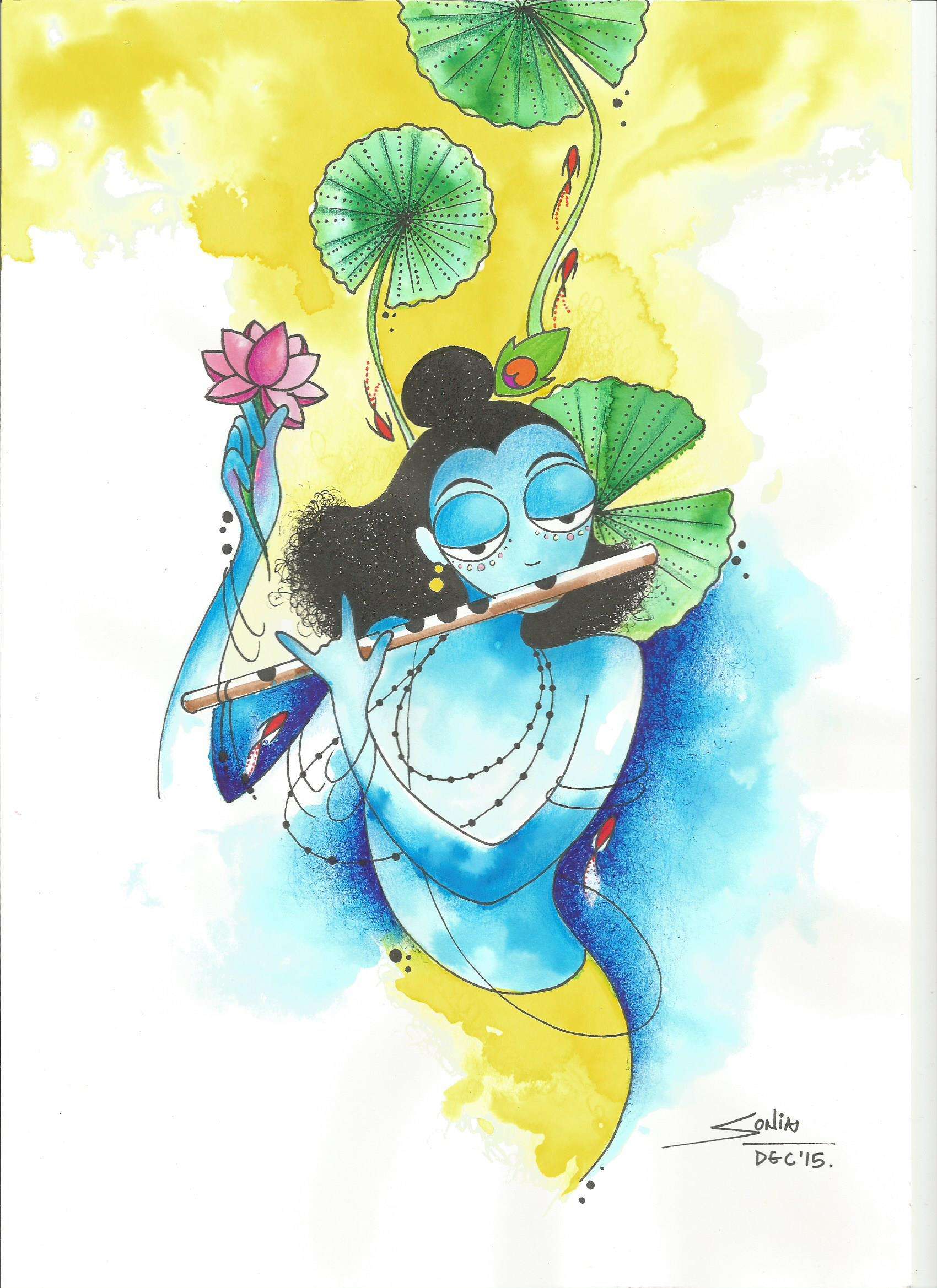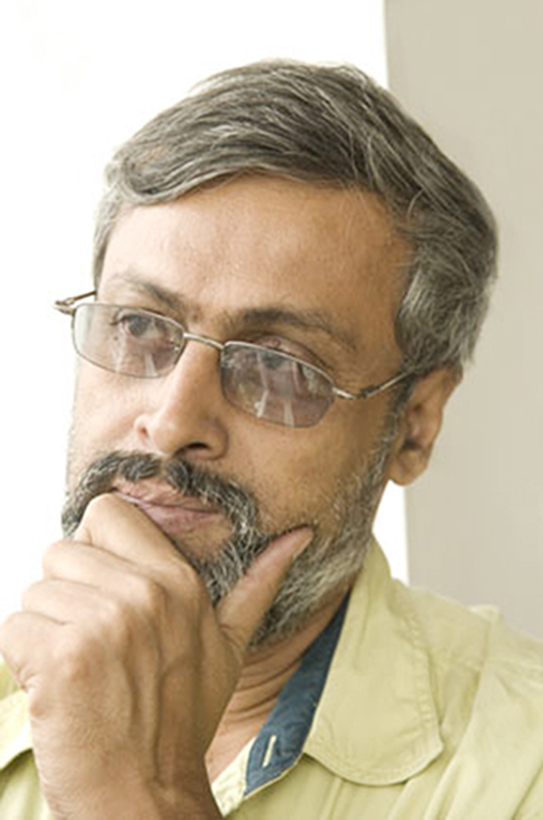
The Beginning
The story of Indian art begins 28 miles southeast of Bhopal in the Vindhya mountain range of Madhya Pradesh state of India. Bhimbetka rock shelters in the Raisen district are the oldest example of art in the Indian Subcontinent. These were mentioned by a colonial-era British official in 1888, twelve years before the discovery of Altamira caves in Spain. At this prehistoric site, 750 rock shelters are distributed over an area of 6.2 miles. The paintings of animals, hunting, and dances, etc., are made using vegetable colors, preserved for so long because these were generally painted inside a niche or an inner wall. Here the earliest paintings are about 30,000 years old!
‘Indian art’ consists of not just paintings, but sculptures, pottery, architecture, and textile art too. Religion has played a significant role in history in the art world, particularly in India. Hinduism, Sikhism, Buddhism, Jainism, and Islam; all influenced the art scene in India. As religion travelled from India to the other parts of the subcontinent and Southeast Asia, the art travelled along and got incorporated there into the prevailing art scene of that time. Japan, China, Vietnam, Cambodia, Thailand, Malaysia, Singapore, and Laos have artistic scenes that resemble the ones in India. These nations have many historic connections to bind them, art is one of these.
Terracotta Diaries
Next in line, after the cave art, is the art of the great Indus Valley Civilization. The story here is earthy and reddish-brown because of terracotta. The sites of Harappa and Mohenjo-Daro were discovered in Pakistan during the colonial era.
The Dancing Girl and the Priest Man are the two most recognizable artworks of this glorious land and time.
Terracotta, a type of glazed or unglazed ceramic that’s porous after being fired, was made by inhabitants of this ancient civilization.
Pottery of this time has been termed as the black and red ware culture (BRW).
Carnelian, a semi-precious stone, was also used to make beautiful ornaments.
The figure on the steatite Pashupati seal has been compared to God Shiva.
These artefacts take one into the details of the culture and the art scene of Bronze Age India. They are like a doorway to the kind of life that our ancestors lived riding bullock carts on the brick-lined streets.
You cannot look at the excavated art pieces and not be awestruck by their excellent craftsmanship and resilience.
Art in the Times of Great Dynasties
After the Indus valley, we skip many years to arrive at the period of Mauryan rule. Architectural excellence was at its peak at that time because of the majestic rulers like Chandragupta and Ashoka. Buddhist stupas were being made in rock-cut style across the empire for promoting the religion. India cherishes this grand historical period greatly and that’s the reason why the national emblem is derived from the Lion Capital built during this period.
After the Mauryans, mostly cave architecture and temples were prominently made. In some caves, frescoes were discovered. Idols were commonly based on religious themes. The UNESCO World Heritage site Khajuraho Temples are a fine example of medieval Indian architecture. The temples are dedicated to two religions, Hinduism and Jainism, depicting the Indian ethos of tolerance and inclusiveness.
Many years went by, kingdoms in the Deccan region added to the artistic wealth of India and then in 1526 Mughals invaded the northern region of India. They promoted Persian art and architecture here. They destroyed Indian art as they spread their style. It was a violent period in art history. Many temples like Kashi Vishwanath and Somnath were ravaged. Some art styles were lost forever as the traditional Indian art artisans were discouraged to make their religion-inspired works and Islamic themes were promoted.
Also Read: Influence of Religion on Indian Art
Miniature paintings in Mughal and Rajput style are recognizable from this era. These are small-sized paintings made inside books as illustrations or as single works to be kept inside a file. Akbarnama has a significant collection of Mughal-style miniature paintings. Nur Jahan and Radha (Bani Thani) are famous artworks in miniature. There was a massive exodus of artists from the northern plain and when they settled in the southern parts of the country; Deccani, Mysore, and Tanjore schools of painting developed. The plot of the story now nears the recent history that scribbled the rest of this story. Colonialism and the Indian struggle for independence had a huge impact on the culture of India. British, on the one hand, build monuments and roads here, albeit for their selfish motives, and on the other hand, they made sure that history of India preserved in various art forms, craftsmanship and architecture was destroyed totally.
Company Style
Many British artists came to the Indian sub-continent who sought patronage in the Indian princely state rulers. The company style of painting which was a blend of European techniques and Indian themes became common. Portraits, landscapes, and scenes of India were being immortalized on canvas. Raja Ravi Varma, the stalwart of modern art, learned to use oil on canvas and created celebrated masterpieces like Shakuntala.
Dawn of the Contemporary Style
From the year 1900, the contemporary art era begins. Freedom was the reigning emotion at that time. Western concepts like abstractionism affected the artists on this side of the globe. Names like F. N. Souza, M. F. Hussain, and S. H. Raza come to mind from the early years of the beginning of this period. These three and three other artists ran the Bombay Progressive Artists’ Group. They are responsible for promoting expressionism, cubism, and post-impressionism in the country. Women like Jamini Roy, Amrita Sher-Gil, and Anjali Ela Menon are three of the Indian women who brought the feminine creativity, themes, and perspective into Indian art.
Artists from Shantiniketan come into the story next. Rabindranath Tagore, Nandalal Bose, Abanindranath Tagore, and Ramkinkar Baij brought their newfound style. A nationalist wave swept the entire nation, how could art remain untouched. These artists rejected the western modernism and they were inspired to look at the eastern nations, with whom we share religious temper. Japanese art elements were incorporated into the Indian art by these Indian artists.
And the Story Goes On…
Coming to the end of the story, let’s touch upon the folk and tribal art of India. It finds a parallel in the art of the indigenous people elsewhere on the planet. Metalwork, weaving, jewellery-making, and body art are the different elements of the art scene in the distant lands and the deep jungles of India. Their art is an expression of the raw nature and physical phenomenon that they perceive. Tribes, no matter Indian or American, are that group of people who have lived amidst nature since ages, these are the groups that survived major wars and battles, remained aloof from the mainstream, had their own unique lifestyle and cultural practices. Although in the modern times, very little of the land is left from being untouched and intervened by the technology and modern destructive development, the wonderfully connected life that these people had with their land, some of that magic still remains and wherever, nonetheless in bits and pieces, it survives, it evokes amazement. Indian tribal art will surely mesmerize you because it touches upon a deep-seated connection inside all of us- the one we share with nature; soil, water, air, fire and sky.
The story is now written by the contemporary artists who are more equipped, open, free, and privileged by the blessings of modern technology and developments in the society than any of their historical counterparts ever were.
The story attempted to cover a really long period of about 33,200 years but it is utterly lacking. And it surely doesn’t end here. It continues…





















